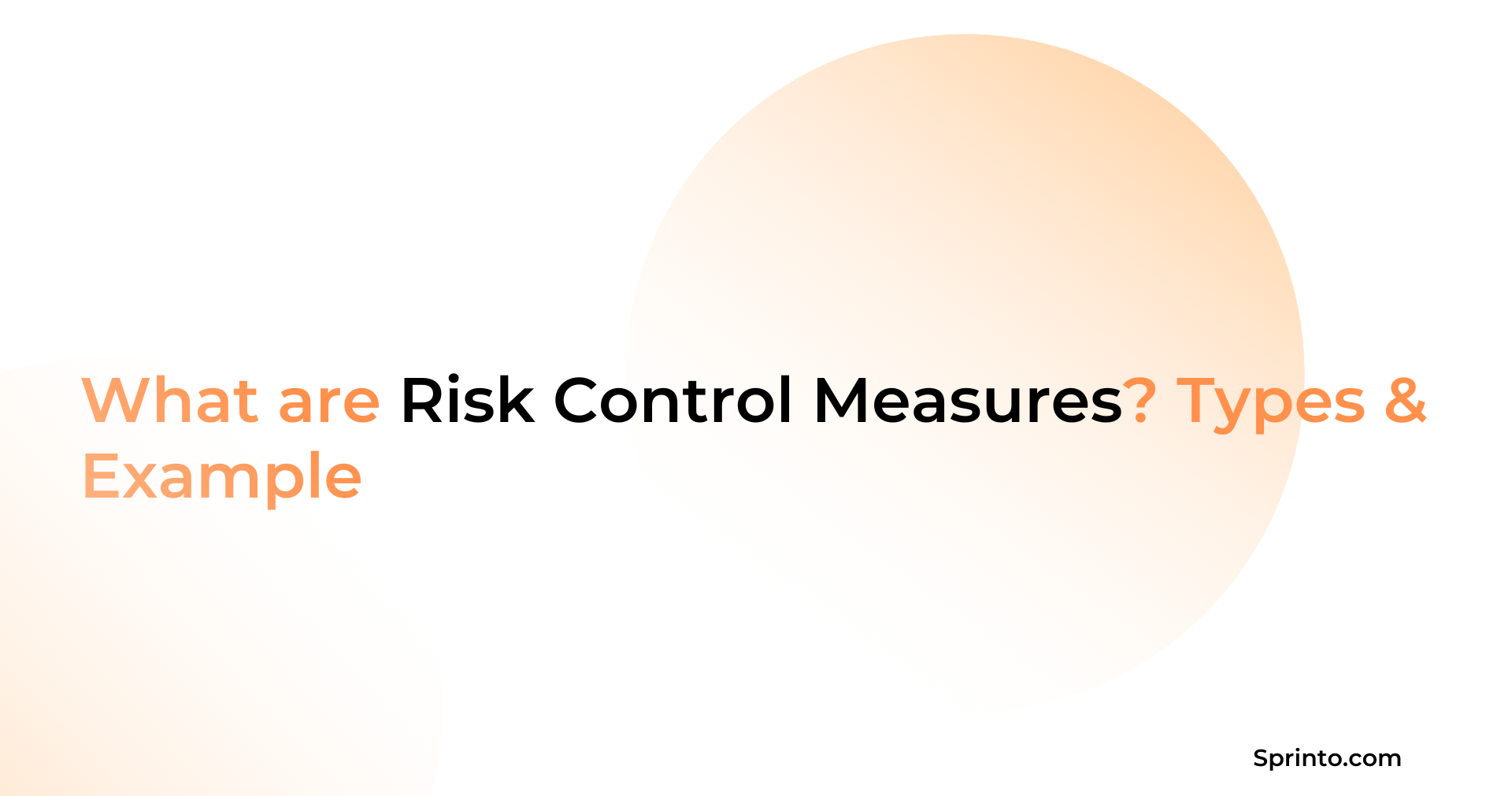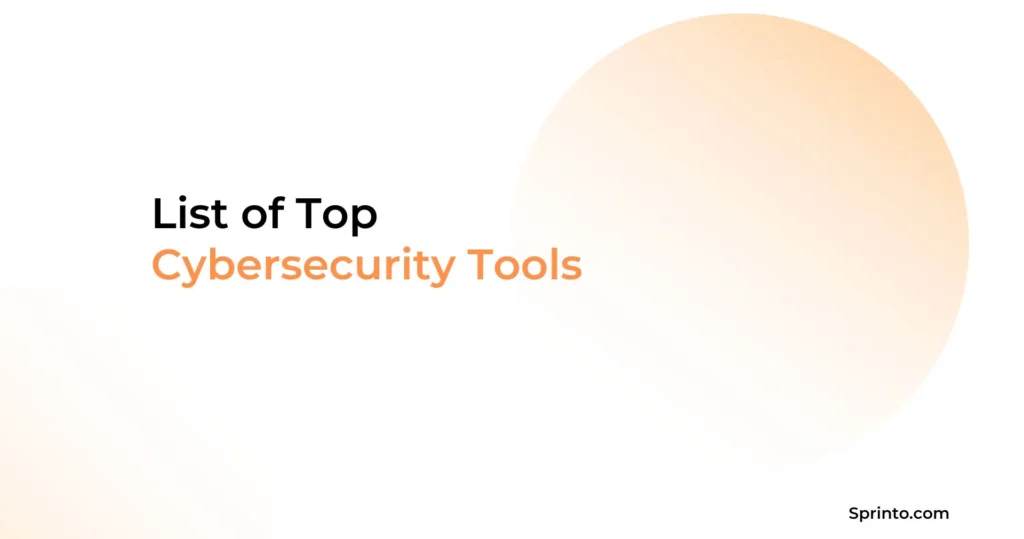
An underprepared business is one risk materialization away from a tenuous period of operational disruptions, economic downturn, and reputational damage. Risk is a constant in the cybersecurity realm, and while most businesses realize this, their risk readiness says otherwise.
According to the 2024 State of Risk Oversight Report, 27% of organizations do not have an enterprise-wide view of risk, while close to half lack a mature and robust risk management program. This underscores the need for many to rethink their approach and take a holistic view of risk management.
But before you jump into developing a comprehensive risk strategy, its crucial to understand the risk environment as well as the risk control measures that’ll serve as the primary defense against threats.
Read this blog to discover the risk control measures that can make or break your strategy and bonus tips to ensure you get the most out of your action plan.
TL;DR:
| Risk control measures are a subset of the risk management strategy and help protect assets, reputation and security. |
| These measures can be categorized under the following techniques: risk elimination, substitution, engineering controls, administrative controls, risk isolation and PPE. |
| Risk elimination stands at the top in the hierarchy of risk control measures as removing the source of the risk is considered the most effective solution. This is followed by risk substitution which replaces the risk source with a safer alternative. |
What are risk control measures?
Risk control measures are specific steps that are implemented with the aim of preventing or minimizing an organization’s risk. These measures help an organization protect critical assets, manage potential threats, ensure compliance and move towards security maturity.
An example could be arranging workforce training for employees to minimize human errors and enabling them to identify and report incidents promptly.
What is the difference between risk controls and risk management?
The key difference between risk controls and risk management is that risk controls are specific actions designed to address individual risks, while risk management is a comprehensive strategy for overseeing and managing risks across an organization. Risk controls are integrated into the broader risk management framework, and effective risk management relies on the implementation of these controls.
Risk controls are tactical measures to remove or minimize risks that are identified through the assessment process. The aim is to bring down these risks to an acceptable level that is within the organization’s risk appetite. These control measures can be proactive (preventive controls) and reactive (detective and corrective controls).
Proactive risk controls aim to prevent risks from occurring, while reactive risk controls aim to detect and address already-occurring risks.
Examples of risk controls include access controls, multi-factor authentication and encryption.
Risk management is a broader concept that uses a systematic approach to identify, assess, prioritize and mitigate risks. It helps manage risks throughout their lifecycle, from initial identification to recovery and monitoring. The risk mitigation stage in the risk management process involves implementing risk controls. So, risk controls are a subset of the broader risk management plan.
Visualize the true impact of risks with Sprinto
List of risk control measures
Risk control measures work with varying effectiveness. While some of these focus on removing the root cause of the risk, others may rely on changes in human behaviour to control the impact of risk.
When choosing risk control measures for your organization, the following hierarchy of controls is usually followed:
Risk elimination
Risk elimination is a control measure that involves removing the source of the risk. For example, transitioning from a legacy system to a modern GRC solution to eliminate the security risks from outdated technology and bad customer experience.
Other examples include discontinuing high-risk vendors, not using public WiFi, and removing unnecessary user accounts.
While elimination is the most preferred and effective control measure, it can be hard to achieve in complex IT environments. Here are some tips and tricks to identify risks early and eliminate them proactively:
- Many potential risks can be avoided at the planning stage. Incorporate security-by-design principles to minimize cybersecurity threats and vulnerabilities in the final product
- Switch to Zero Trust Architecture (ZTA) for networks and always verify access and authorization
- Adopt best practices and frameworks like ISO 27001 and NIST CSF early to minimize data protection risks
- Evaluate your vendors and onboard the ones that have a proven record of security measures
- Use automated control checks, continuous monitoring and vulnerability scans to prevent threats from turning into hazardous events
Substitution
In most cases, 100% risk cannot be eliminated. So, risk substitution is the second most preferred strategy. It involves replacing a high-risk system, technology, or process with a less risky alternative. This alternative presents a more manageable risk that is well within the company’s risk tolerance levels.
Examples of risk substitution include replacing password-only systems with multi-factor authentication, substituting on-premise servers with secure cloud-based servers, and using Virtual Private Network or VPN instead of public Wifi.
Here are some handy tips and tricks for risk substitution:
- Conduct regular risk assessments to understand the risk before (inherent risk) and after substitution (residual risk) and make well-informed decisions.
- Test the substituted process, system or technology in a controlled setting such as a sandbox or run a pilot program.
- Continuously monitor and track the performance of the substitution to identify any gaps.
- Ensure that the new and substituted solution is suitable for your long-term needs.
Engineering controls
Engineering controls are technological or physical safeguards that help minimize risk in cybersecurity. These control measures protect systems, processes, applications, and networks against cyber threats. Examples of engineering controls include firewalls, access controls, redundancy and failover systems, surveillance systems, and antivirus.
Here are some handy tips and tricks when deploying engineering controls:
- Regularly test and validate control effectiveness through scans, pen tests and automated tools
- Shift security left for software development and incorporate engineering controls early in the software development lifecycle.
- Use a combination of control measures to create multiple layers of defense and a robust security posture.
- Document and standardize control implementation to ensure consistency and streamline the processes.
Administrative controls
Administrative controls are managerial and procedural controls that focus on the human element of security. These risk control measures help establish policies, procedures, and guidelines to minimize risks and ensure compliance. For example, information security policies, employee training, password policy and internal audits
Here are some best practices for administrative controls:
- Document the administrative procedures to have a centralized repository and prepare for compliance audits.
- Regularly update policies and procedures to adapt to evolving threats.
- Communication and acknowledgment of the policies are equally important to ensure employee accountability.
- Set up ongoing monitoring and alerts to ensure adherence to administrative policies and get notified in case of deviations.
Risk isolation
Risk isolation involves separating risky systems, networks, and processes from the rest of the environment to minimize the impact of potential breaches. It limits the spread of risk to other areas and protects critical information and assets from damage. For example, network segmentation or quarantining of malware-impacted computer devices.
Here are some tips and tricks to ace risk isolation:
- Isolate public-facing applications from internal networks to minimize the risk exposure to sensitive assets
- Use automation to re-route malicious downloads and attachments to sandbox environments for testing
- Use separate and specialized systems for highly risky activities
- Utilize access control lists and virtual firewalls to isolate critical systems in the cloud
Prioritize risks better with Sprinto
Personal Protective Equipment
Personal Protective Equipment, or PPE involves the use of protective gear, clothing or other specialized equipment to protect against safety risks or workplace hazards. Usually known as the last line of defense, it is popular in the manufacturing and healthcare industry. The PPE can include masks, face shields, protective eyewear and helmets to address any remaining level of risk that other measures cannot address.
For cybersecurity, PPE can be thought of as hardware and software tools that protect against threats and attacks. Examples include encryption software, email filtering systems and hardware security tools such as smart cards.
Here are the best practices to utilize while using PPE:
- Arrange for workforce training and awareness programs to ensure the correct use of PPE and cybersecurity tools
- Combine PPE with other risk control measures to create multiple layers of security and minimize exposure to hazards.
- Securely store and dispose of hardware and software devices that are not in use or outdated PPE to minimize the threat of unauthorized access.
- Regularly update software and tools or replace faulty PPE to stay abreast of evolving threats.
Manage risks with precision with Sprinto
Risk control measures are a part of the broader risk management strategy and these are not static. The measures must address new and evolving risks to build a resilient organization. Organizations therefore require a well-integrated risk management component for enhance preparedness. That’s where GRC tools like Sprinto come in.
Sprinto has an integrated risk management module that helps you evaluate risks within the business context and make well-informed decisions. The comprehensive risk library helps you scope out risks unique to your business and the risk register provides actionable risk data as you scale. The individual risk profiles and the heatmaps help you visualize and understand the true impact of your risks. This helps with better prioritization to help develop and implement risk control measures.
The platform also enables continuous risk monitoring and sends time-bound and context-rich alerts for quick resolution in case of anomalies.
Manage risks with precision. Speak to our experts today.
FAQS
What are risk assessment control measures?
Risk assessment control measures are actions that enable an organization to manage risks identified through risk assessments by minimizing their likelihood and impact. These measures either help prevent risks from occurring or ensure quick recovery if an event has already occurred. Examples of risk assessment control measures include firewalls, encryption, internal audits, and intrusion detection tools.
What is a hierarchy of risk control measures?
The hierarchy of control measures is a framework that enables organizations to rank strategies and prioritize efforts that provide the highest level of protection. The hierarchy classifies measures from most effective (elimination) to least effective (PPE) based on their ability to mitigate risks.
Risk control strategies such as elimination or substitution are highly effective because they remove or replace the risk source with safer alternatives. PPE is viewed as the least effective method, as it relies on proper human behavior for protection
What factors should be considered when choosing risk control measures?
The factors that must be considered when choosing risk control measures include the nature of the risk, the impact on operations, the effectiveness of control measures, the feasibility and cost, and regulatory requirements.
What are some risk control measures in workplace?
Risk control measures in workplace aim to minimize risks for employees and create a safe environment. Some of these measures include:
- Removing the hazard completely or elimination
- Replacing the hazardous material or process with a safer alternative also known as substitution
- Implementing physical changes such as ventilation systems also known as engineering controls
- Modifying procedures and policies ie. implementing administrative controls
- Providing workers with Personal Protective Equipment
- Arranging for training and education
- Conducting healthcare surveys
Payal Wadhwa
Payal is your friendly neighborhood compliance whiz who is also ISC2 certified! She turns perplexing compliance lingo into actionable advice about keeping your digital business safe and savvy. When she isn’t saving virtual worlds, she’s penning down poetic musings or lighting up local open mics. Cyber savvy by day, poet by night!
Explore more
research & insights curated to help you earn a seat at the table.
















